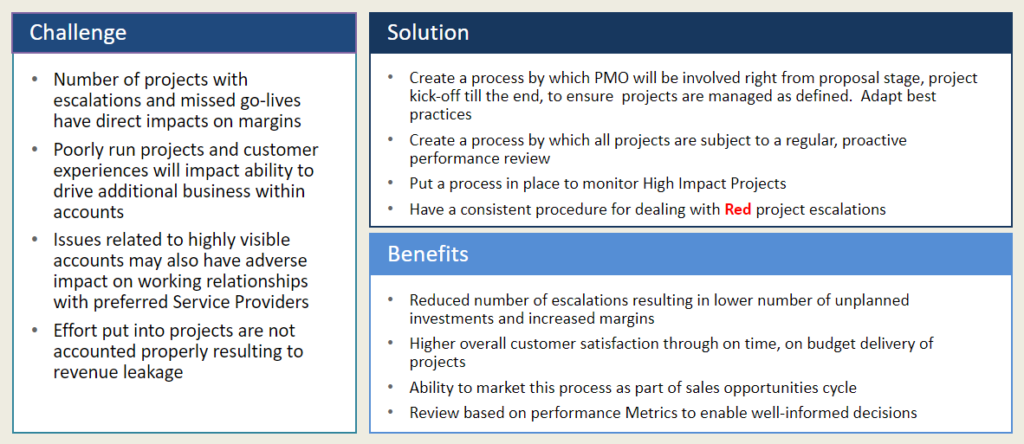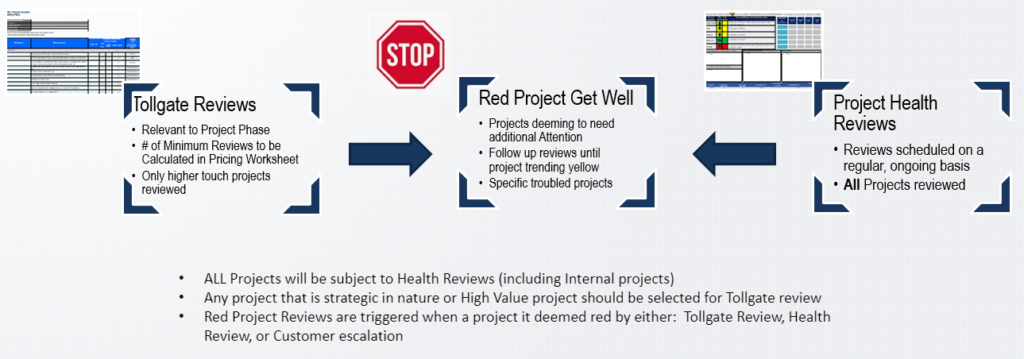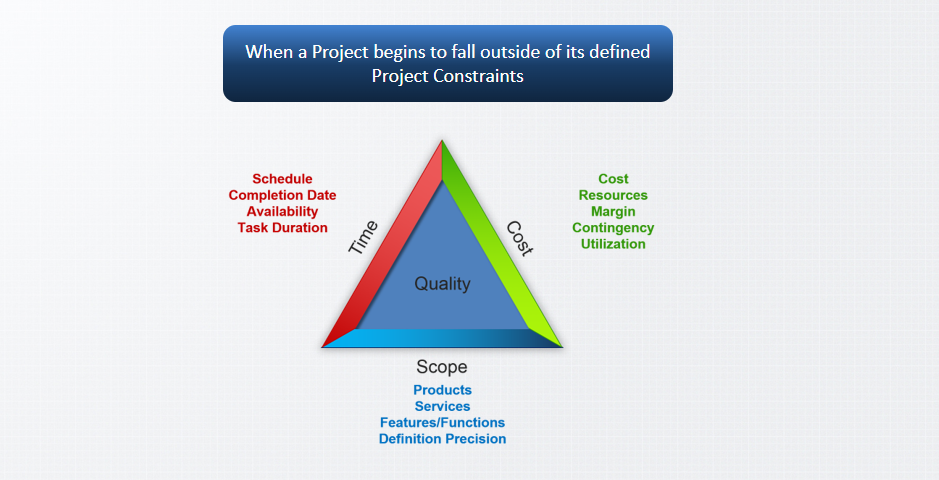
How crucial it is to implement an Effective Project Governance for SMEs
Effective Project Governance
Introduction
According to PMI, ‘Project governance provides direction and defines decision-making procedures and metrics for validating impacts to the project. It also enables the project team to deliver on requirements and creates a forum for issue resolution to occur in a timely manner.’
Project governance review is important to keep track of your projects, to ensure that they are not turning problematic later on and catch them at an early stage. Effective and efficient – Good project governance means that processes and institutions produce results that meet the needs of stakeholders while making the best use of resources at their disposal. While PMI showcases the detailed steps required for project Governance, which is very useful for large projects, implementing the same for SMEs is time consuming, arduous not to mention expensive. It is a sad statistic that many project fail and the project success rate is a mere 25%. SMEs are the ones that are hit the most, as they are unable to bear the financial burden. This article is for SMEs – Here we explore an effective way to implement IT project governance with the limited resources available. The expectation is that you have PMO support which is a key component. Investing in a PMO helps to have a tight control over your process, progress and finances which will show on the bottom line later on.
The need for Project Governance reviews

Project Governance is all about reviews conducted internally to gauge the health of your projects. Here are some of the reviews that you should consider conducting on a regular basis internally. Though it looks long, it is essential to spend some time to avoid problems later on. The categories to focus on are the following
- Scope and Quality
- Schedule and Resource
- Issue and Risks
- Financials
- Methodology and Process Adherence
Managing the scope is the key. All are familiar with Scope creep and the damage it can have on your project. Change Management, dealing with change requests is the main villain when there are no control procedures. Ultimately, the project governance is all about ticking the boxes of the above to avoid them or catch them early so that you are able to take corrective measures.
Here are the types of project governance reviews that have to be conducted.

Tollgate Review
Tollgate Review is like a checkpoint at which the various team members meet with a project leader and determine if the work has been performed as indicated in the project plan -and if the objectives mentioned have been achieved

Involve Architect only for highest risk level for a review. Since transitioning is the final stage of handing over the project, it is important to ensure you are handing over the project according to your original contract. This is done only once at the end of the project.
What do you do for the health check? The figure below shows the factors that have to be checked.

Common Questions asked during a project governance review
From the above image, these are the typical kinds of questions the team reviews and they are put up by the PMO.
Here are a sample list of question that are typically asked during a project governance review. You can add to them.
-
- What is the current status of the project in terms of schedule and milestones?
- Have there been any significant issues or risks identified since the last update?
- What mitigation strategies are in place for the identified risks?
- Are there any changes in project scope that we need to be aware of?
- Are we aligned with the project plan, and if we are not where are the deficiencies?
- How is the project performing against the budget?
- Are there any resource constraints or staffing issues?
- How many critical incidents were reported this month?
- Can you provide an update on key deliverables and their progress?
- Have there been any delays, and what is being done to address them?
- Are there any dependencies that are impacting the project timeline?
- How is the communication with stakeholders being managed?
- Have there been any significant technical challenges or roadblocks?
- How is the latest release performing?
- Are all team members clear on their roles and responsibilities?
- What are the key upcoming tasks and deadlines?
- How are quality assurance and testing progressing?
- Are there any compliance or regulatory issues that need attention?
- How many new emergency Change requests do we have?
- What feedback have you received from the end-users or clients?
- How is the integration with other systems or projects progressing?
- Are there any additional resources or support needed from the governance team?
- What are the key achievements or successes since the last meeting?
- Are there any lessons learned or best practices that can be applied to future phases of the project?
All reviews need to have a process in place. Here is a simple process that you can build upon.
Based on the project owning practice, the project manager works with the PMO to determine the level of project governance required and the meeting scheduled for their project. By default all the projects are considered for the review based on a criteria defined (generally based on project value)
✓ The PMO maintains a Project health review tracker to be updated by each project manager. For every review PMO admin sends a shared document for each project to be updated by the PM.
✓ PMO admin maintains a calendar to request for PM’s update and publishing the deck
✓ Project Financials Dashboard Report will be extracted from your budgeting application
✓ PMO generates PMO Governance review deck using shared document update for respective project and financial dashboard from budgeting application
✓ Any action that comes out of the review will be recorded in a separate sheet, which will be published in the following review for action and closure
✓ When a project has an Overall Status = “RED” a Red Project Review will be required
What next?
Once your organization sees the benefit of Governance review on your projects, you may start to leverage the entire spectrum which are detailed in COBIT and other frameworks. These become important when you are working on Government contracts or other highly mission critical systems requiring large funding to which the projects are answerable to. Following those established standards is a must for such projects.
If you need more information on IT Governance frameworks, these are some of the good references to look at – examples are AS8015-2005, COBIT.
Authored by Vijay Chander – 2022

